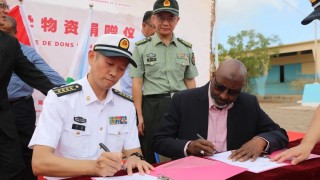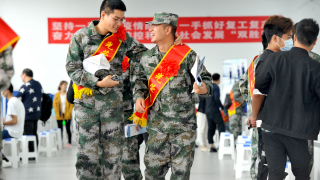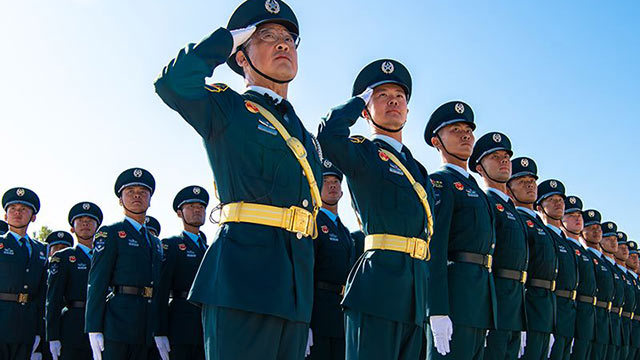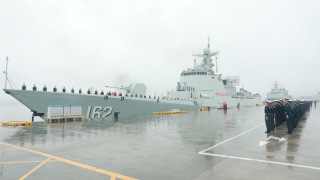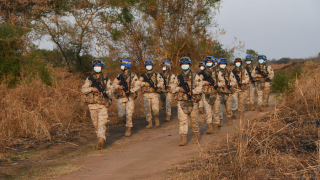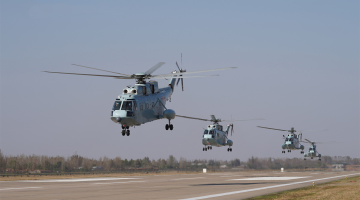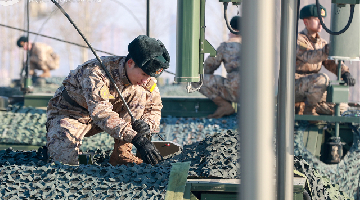By Lin Yuan
According to foreign media reports, the US Department of Defense plans to reorganize the US Marine Corps deployed in Okinawa, Japan, and to establish a new-type Marine Littoral Regiment (MLR). The relevant trends reflect the strategic plan of the US military to strengthen its frontier deployment in the Asia-Pacific region.
To establish a new coastal combat regiment
It's reported that the US plans for a new Marine quick-reaction force on Okinawa, Japan, by 2025 to quickly respond to the emergencies such as remote island defense. The new Marine littoral regiment is a product of the strategic transformation promoted by the high-level officers of the US Marine Corps. As declared in the US Marine Corps' Force Design 2030, the new Marine littoral combat regiment will grow to be an important force to meet the needs of major powers to compete and carry out multiple tasks in a complex operational environment.
According to the previous plan of the US military, the US Marine Corps would rely on the 4th and the 12th Marine regiments stationed in Okinawa to form two new littoral combat regiments, which will be completed from 2025 to 2026 and from 2027 to 2030, respectively.
According to the information revealed this time, the construction of the US Marine littoral combat regiment has been significantly accelerated. Some analysts believed that the US military's move has even deeper strategic considerations.
On the one hand, it seeks breakthroughs in transformation and development. The formation of the littoral combat regiment is an important measure for the US Marine Corps to achieve the goal.
First of all, the new littoral regiment features high maneuverability and covertness, capable of quick deployment in a dispersed manner at key nodes on islands and straits, as well as along coastlines.
Second, the radars and unmanned aerial vehicles equipped for the new littoral regiment can help strengthen the situation awareness on battlefield and thereby more accurately locate threats therein.
Third, the new littoral regiment is equipped with medium-range cruise missiles, which the US Marine Corps has focused on developing in recent years, capable of attacking surface warships and land targets, in complementation with the US military's large-scale sea-air operational platform.
On the other hand, it may intend to strengthen cooperation while focusing on the system layout. In recent years, the US military has continuously strengthened its deployment of air and sea forces in the Asia-Pacific region and continued to withdraw its forces and weapon platforms along the "first island chain", increase its force deployment and facility construction in "peripheral areas" like Guam and Wake Island in response to the anti-access/area denial of enemies. In all, the US military has pushed forward its military layout in the Asia-Pacific region in multiple ways.
The US military’s vigorous promotion of the construction of amphibious combat forces in Okinawa this time has ostensibly helped Japan improve its defense capability on outlying islands, but in fact meant to strengthen the blockade capability of the "first island chain" and compete for sea supremacy in the western Pacific. The Marine Littoral Regiment has emphasized flexible deployment. At ordinary times, part of its forces is stationed in Okinawa, with its main force concentrated in Guam, the "second island chain", and even Hawaii, the "third island chain"; during war times, the US Marine littoral combat regiment can realize quick deployment and reconnaissance among the islands, and implement long-range precision strikes.
In addition, the newly-established Marine Littoral Regiment may provide opportunities for cooperation between the US and its allies. In March 2022, the first US littoral combat regiment headed to the Philippines for the "Balikatan" (in Filipino means “shoulder to shoulder”) joint military exercise to familiarize itself with the local terrain and battlefield environment. As the US continues to press the Philippine government to open more military base for US use, the Marine littoral regiment will have its scope of activities in the Philippines further expanded.
To promote multilateral military cooperation
In addition to vigorously promoting the construction of the US Marine Littoral Regiment, the US-Japan military cooperation may seek new breakthroughs in depth, breadth and scale in the future, and relevant trends deserve constant vigilance.
On the one hand, bilateral military cooperation has grown closer. Recently, Lieutenant General James Bierman, commanding general of III Marine Expeditionary Force and Marine Forces Japan, said that the armed forces of the US and Japan are expanding the scale of joint operations while integrating their respective command structures. The US Defense Secretary Lloyd Austin also said that the US will elevate its military presence in Japan by several means before 2025.
It is reported that with the decision of the Japanese government to establish an "integrated command" aimed for the unified order of the land, sea and air self-defense forces, the US military is considering transferring part of the command headquarters of the Indo-Pacific Command in Hawaii to the US Forces Japan Headquarters stationed at Yokota Air Base in Tokyo, with a view to enable the US Forces Japan Headquarters to play more commanding functions and promote the Japan-US military cooperation.
On the other hand, a sense of military provocation is more explicitly exposed. In 2022, the US issued a new-version National Security Strategy (NSS), in which the Asia-Pacific region is viewed as a major area for frontier deployment. The US aims to have frontier deployment featuring "multi-functions, higher flexibility and tenacity" in Japan, while working hand in hand with Japan to promote multilateral military cooperation with other countries.
